I'm not one to obsess over gear; I've never suffered from GAS. Frankly, the seemingly endless discussions around cameras, lenses, and various bits of kit that just keep multiplying year after year, couldn't interest me less. And now that I've said that, I'm going to write about gear.
The Camera
If you've made it this far, chances are you're at least somewhat intrigued by the headline and lead image. You might have even asked yourself, "what the heck is that thing?!" Fair question, and now I'm going to tell you.
It's a "frankencamera," built from three different types of camera systems: digital 35mm, large format film, and medium format film. Specifically, it's a Nikon D850 body (serving as a digital back), a Cambo SCX monorail (the technical camera), and Mamiya lenses from their classic RZ67 system.
Yes, it's ridiculous. Yes, I use it every day in my professional work.
As you might imagine, this thing isn't exactly "turnkey" and I had to do a lot of modifications to make it all work. Going through all of those modifications would fill a small book, and I'm not going to write that much, so instead, here's an image gallery with descriptions.
What's the Point?!
Is this a solution in search of a problem? Why would anyone even do something like this? It's all about the ability to execute certain types of movements.
In commercial product photography, you're often faced with certain technical challenges that just can't be adequately addressed with a regular direct-mount lens/camera setup. Lines need to be kept straight, things need to be fully in focus, front to back, and a whole host of other issues. A technical camera is what addresses all of those problems. Tilting and swinging the front standard allows me to manipulate the plane of focus, which would otherwise be limited to only being perpendicular to the sensor plane.
Tilting and swinging the rear standard changes perspective the same way as just tilting or panning a regular camera would. Then, the rise and fall of the standards allows me to change perspective without creating converging/ diverging lines. This is most often used in architectural photography, but is also common in product photography. Shifting the standards left or right does the same as rise/ fall, and is useful when you want to, say, move your camera out of view of a reflective surface. Ever wonder how mirrors are photographed without having the camera in there? It's the shift!
But, surely there's a commercially available system out there that does the same thing, right? Yes, there is! Cambo makes the incredible Actus XL 35, and if I had the money I would probably use it, but my setup does the same thing at roughly 1/10th of the cost. And that's just good business. Perhaps more importantly, though, I enjoy tinkering, and I get satisfaction from being able to say that I built my system, as opposed to just buying it. And, as a bonus, more people are starting to get interested in this kind of system. I wouldn't go as far as saying there's a community yet, but with people like Scott Choucino in the game, it probably won't be long!
As for results? Well, I'll let another image gallery do the heavy lifting.
In the above examples, the first image employs front standard tilt. The focal plane follows the stem of the roses. Now, at the distance and aperture I was working, DoF is still shallow enough that focus stacking will still be needed. However, by employing tilt in this scenario, I can use far fewer images for my stack, which is important as the roses are definitely moving and will create problems if I can't get through the stack quickly.
In the second image, no tilt is employed, and you can see that the stems and the roses have much less area in focus. It will take many more images to get through a stack in this case, and movement in the roses will be a problem.
The third image shows the resultant composited stack. I didn't get the very front edge of the forward-most rose in the stack, but you get the point.
Conclusion
Anyway, that's my camera! Is it for everyone? Definitely not. But it does what I need it to do. As I said before, I use it daily, and it has more than paid for itself. It's even sort of portable, and recently made the trek to Atlanta for some client work. Heck, I might even make another one!

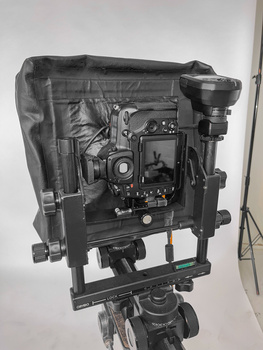
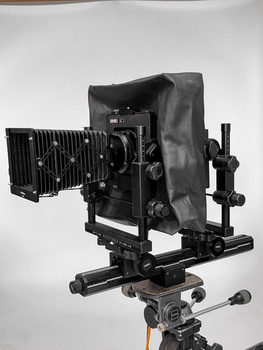
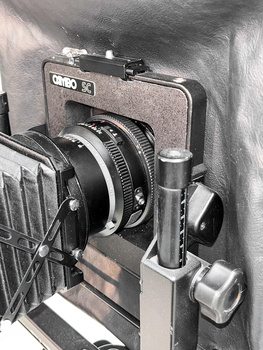
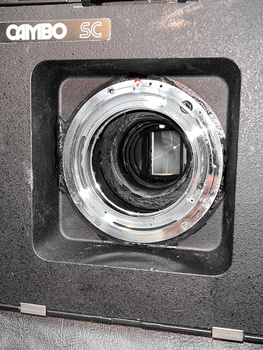
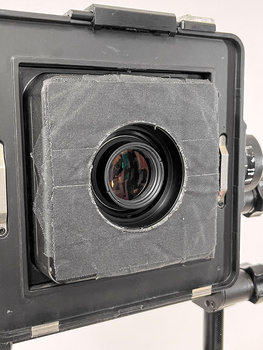

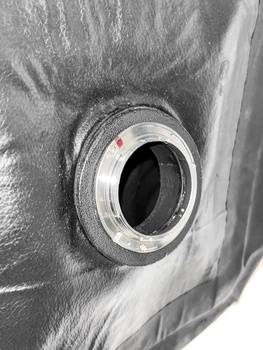

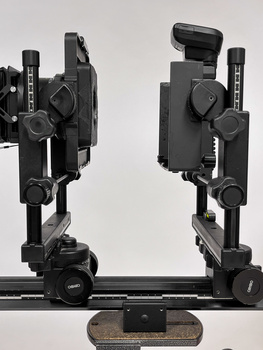

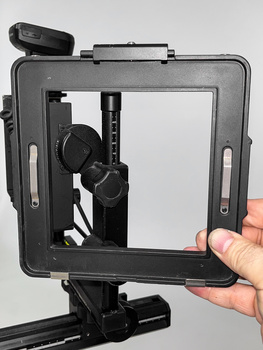
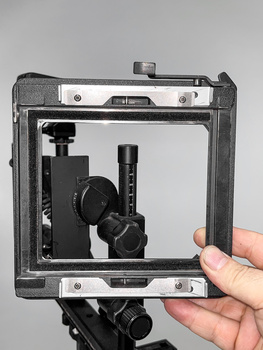
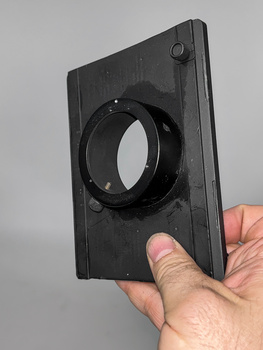
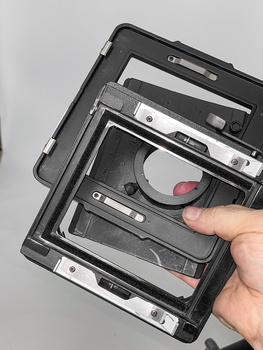


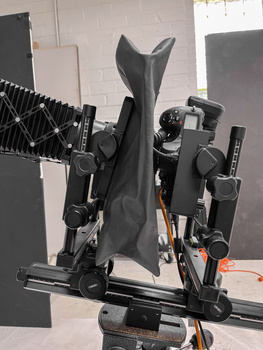










Awesome post, and the camera you’re talking about also💪🏻 !!
I’d really love to see more of your photos made with this camera 🙏🏻
I’m having same thing in future plan to build for myself for a reeealy looong time 🤪 (since the beginnings of dslrs)
Thanks! You can see more images at my website or Instagram. Good luck with your camera build!
Awesome. I love tinkering, I’m not at this level though
Thank you! Keep plugging away at it. You'll get there!
Interesting DIY project, but there are a few caveats which may or may not hinder your work.
1, A DSLR has such deep hole between the lens mount and the sensor, that it will limit the maximum movement you can achieve without having mechanical vignetting. Especially for Nikon F mount cameras, as that mount has tiny opening diameter (compered to the Canon EF especially). This will be an issue especially for longer lenses.
2, The mechanical precision of a DIY project built on top of a 4x5 camera is below the mentioned Actus (and even more the modern "pancake cameras", like the Alpa camera or the Phase One XT, etc), which means that you will be unable to set the lens perpendicular to the sensor plane, which will be a huge problem for shorter lenses, though due to the flange distance + the Cambo SCX mechanical limitations you will not be able to put anything short in front of this camera anyways.
Anyway, it is a great fun project, just don't expect the same quality from this setup than the Cambo you mentioned above.
(sidenote: I built an EF adapter to my Cambo SC a while (~15 years) back, and since then I also made an adapter for the Phase One IQ back as well to shoot some macro stuff mostly)
Thanks for reading and commenting!
On your points:
1. Mechanical vignetting isn't an issue, as the range of movements on the SC far exceeds the image circle from the Mamiya MF lenses, which in turn far exceeds what I need in almost all cases. The longest lens I use is 150mm, and that is pretty much exclusively used for macro. Otherwise, I mainly use 90mm and 50mm. Never have an issue.
2. As I mentioned in my article, I flipped the rear standard inward specifically to deal with the FFD issue. In its current modified configuration, I could get the back of the lens right up to the body mount, if I wanted (which I normally don't, of course). So, I in fact have no limitations on how wide of a lens I can use in this system. As for mechanical precision, yes, my DIY build is far from precise. But, I can actually get the lens perfectly perpendicular to the sensor plane through independent leveling of the standards. I'm only limited by how precise my level measurements are. With bubble levels, I can get "good enough" results. If I needed scientific precision, there are ways of doing that, like with a digital machinist level, etc. I'm not doing scientific measurement work, though, so...
All that said, yes, the Cambo XL 35 is superior. And it should be for almost $7,000 USD
I agree with you! My self build technical camera is absolutly useful! There is a lot of engineering involved to build such a camera! The only drawback is the weight and size of your build in my opinion.
Shure there are expensive cameras like cambo or alpa, but you can use nearly every MF /LF lens you like as long as the image circle is big enough. Vignetting is no issue - or not more than on any cambo / mirrorless system. That depends of the lens used on the end. My solution is to use leightweight lenses without helicoid barrels ( enlarger lenses / old MF lenses) mainly. When u use lenses with a FFD of more than 70mm ( Mamiya Rz / Pentacon six / Kiev 88 and others...) you can go to wide angle as well. I use a Arsat 180 degree 30mm MF fisheye as my widest lens for instance.
regards
Björn
Interesting build! Great job.